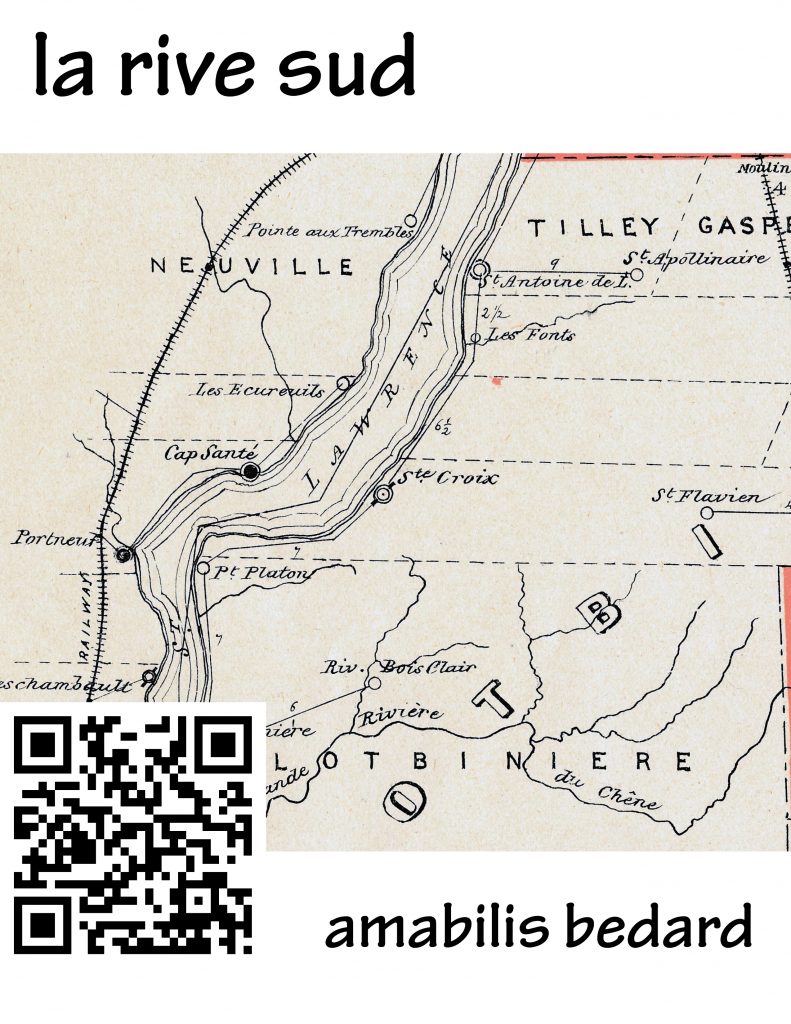
I don’t suppose any of us came close to drowning that cold, windy afternoon in late September but you’d have a tough time convincing Danny Raymes as he lay shivering in his bed. Buried beneath a pile of “retired” army issue blankets, you couldn’t really tell if he was dead or alive. Eyes closed, lips icy blue, his face pale, ghost-like, he didn’t look good. But every so often there would be a sign of life. The springs would creak gently as he fought off another wave of shivers.
They were less frequent now, and not as intense, so we knew he was on the mend. It had been a grim half-hour in the water for all of us, but Raymes had been the one to feel it most.
Two years earlier his parents Dan and Liallia Raymes had given him a choice: join the Boy Scouts or go to St. John’s. They felt he needed something to occupy his evenings and weekends. He opted for St. John’s because of the outdoor program but he still hadn’t gotten used to the cold and wet.
My letter home describing the ordeal must have given Mum and Dad a bit of a scare. (I was a very conscientious letter-writer, writing most Sundays, and Mum still had most of them when I decided to write this book.)
'This afternoon we went out in a canoe and after about two strokes we tipped up in the cold Red River water and we didn't manage to get out until half an hour or so later and I was really cold, but I survived.'
If the plan had always been to dump the canoes that afternoon, it hadn’t been well-publicized. Before setting off from the bank of the river which bends sharply north in front of the school, we had received some basic instruction on how to paddle and water safety.
Much of this, of course, had become routine at St. John’s. Since the summer of 1957 when boys in the cathedral choir club began taking trips in an old navy cutter christened the St. John, the school’s staff had been teaching boys to become skilled boatmen.
In August of that summer, half a dozen boys set off with Frank Wiens and Ted Byfield, both of whom were also members of the choir, on the school’s first big trip, rowing 250 miles around the South end of Lake Winnipeg.
One year later, a couple more leaders including 19-year-old Keith Bennett had been recruited, a second cutter, the St. Andrew, had been acquired, and there were twice as many boys willing to brave the dangerously uncertain waters of Lake Winnipeg.
The older boys, ages 11 to 16, made front page news in late August when their cutter, the St. John, ran into very bad weather and had to turn back. ‘Choirboys Triumph Over Lake‘ read the banner headline in the Winnipeg Tribune on Aug. 29, 1958. ‘Six boys in a boat have written a new saga of Lake Winnipeg,’ read the story that followed.
'Ranging in ages from 11 to 16, they tackled the huge lake in a rowing contest seldom if ever attempted since the brawny Selkirk settlers set the pace in their York boats 150 years ago. Today the senior boys' choir of St. John’s Cathedral are approaching the beach resort area of the lake's southern shores after a two-week odyssey that carried them 250 miles north to the rugged region of Berens River. They battled the lake in all types of weather in a season which veteran lake sailors regarded as "rough".'
In the midst of the worst storm, they spent one long night trying to free their half-ton boat from a reef. Local commercial fishermen said they were crazy to be out in such high seas. One mother hired a plane to rescue her son in the middle of the ordeal.
The cutters had one great advantage over many other boats — they were almost impossible to tip. They could be swamped, but as long as they were close to shore there was little danger of a serious accident. One other precaution helped reduce the risk of drowning: the leaders insisted life jackets be worn in the boats at all times.
Bad weather may have forced the 1958 expedition to abandon its goal, but not before they had left behind a simple testimony to their accomplishment — one that was also a reminder of the religious roots of the outdoor club. On Sandy Bar, a finger of windswept shoreline that points out into the lake for five miles near Berens River, a wooden cross was erected bearing an inscription from the Mariner’s Psalm, Number 107: `These men see the words of the Lord written in the deep – St. John’s, 1958.’
That fall, Mr. Wiens and Mr. Byfield turned the choir club into an evening and weekend school and soon after began construction of the 44-foot, 14-man sailboat later named the St. Peter. The idea behind the sailboat was to give boys who had completed three rowing trips a more relaxed outing as a graduation present. The project took two winters to complete and gave rise to some of the most entertaining anecdotes from the early years of the school, primarily because every board and nail had to be scrounged. Unfortunately, the St. Peter never really fit into the school’s outdoor program, and after three summers was sold.
In the meantime, the rowing program had been exceeding all expectations. An expedition of senior boys in August of 1959 succeeded in reaching Norway House at the North end of Lake Winnipeg, and other trips on the lake during the following two summers were just as successful. However, through it all, the school began to realize that cutters had two major drawbacks — they were agonizingly slow, and they could only be used on lakes and deep rivers like the Red. The latter was the most serious because it meant most of Canada’s famous waterways were off-limits.
The school’s founders had only to consider for a minute what it was that made those waterways famous to find a solution to their problem. Without the canoe, there would have been no exploration of most of the Canadian wilderness.
In the summer of 1962, the school abandoned its trusty fleet of cutters in favor of three deep-bottomed north canoes built by the Chestnut Canoe Company of Fredericton, N.B. which each would hold up to 12 paddlers. During the program’s inaugural trip over the famous Grand Portage route, the school quickly learned how perilous travel could be in those sleek, “voyageur-style” craft.
The Spokane Garry, named after the Indian chief from the Oregon territory who brought Christianity to the Spokane tribe, dumped in the rapids on the Rainy River, badly damaging the stem and hull, and seriously injuring the knee of future St. John’s master Dave Thompson.
The boat was out of service for more than a year being repaired. Disaster had been avoided because the crew had executed the correct emergency procedure and the canoe had been close to shore.
Sixteen years later St. John’s was involved in one of Canada’s worst boating accidents when 12 boys and one of the brigade leaders from St. John’s School of Ontario drowned while paddling on Lake Timiskaming, partly because safety procedures were not followed. The coroner at the inquest afterward cited numerous errors or omissions in planning, preparation, and emergency procedure.
When I arrived at the school the canoes had been used on only one trip, so no one was taking any risks. The teacher giving us our briefing had been bowsman in the Spokane Garry when it dumped.
“Remember, if we dump, it’s going to be cold,” said Mr. Bennett, a veteran of nearly half a dozen cutter trips.
“But don’t panic if you get into trouble. The canoe won’t sink so just hang on to the side. And if you can, hold on to your paddle as well.”
In the event of dumping, he said the first thing to do was for the steersman to take a roll-call. Once everyone had been accounted for, the procedure was to right the boat and attempt to boost two of the smallest boys into it so they could begin paddling. Everyone else was expected to kick with their feet.
Two boats were going out that afternoon — the David Thompson, named after the great explorer, and William Cockran, named after the Anglican missionary who in the 1850s helped build the stone church across the river from the school. I was in the David Thompson, as were many of my classmates.
We loaded the canoe from the back, starting with Mr. Bennett who took up a position on the stern. The boat rolled wildly from side to side as one crew member after another crawled over the thwarts and took up his assigned position. A cushion of Red River gumbo was all that kept us from tipping.
“Shove off,” called out Mr. Bennett to the bowsman. Most of the time his voice had a warm singing tone. He had grown up in England and had been a student at St. Paul’s Cathedral choir school. A highlight was singing at the coronation of Queen Elizabeth.
At any time or place, he could be expected to break into a rich operatic tenor – humming or singing anything from hymns to pop tunes. But not that day. We were stuck in the mud!
“Put your back into it,” he growled. “The rest of you dig your paddles in and push.”
Much to everyone’s relief the shoving and pushing worked and only the bowsman got his feet wet. But once on the water, we were immediately beset by another problem. The canoe began to roll uneasily from side to side. And the wind from the north wasn’t helping matters.
“Backwater,” he barked in an effort to get far enough from shore to turn the bow out into the river.
But almost no one seemed to remember what backwater meant. The chaos that resulted as one paddle bang against another seriously destabilized the boat. On the second stroke, the canoe came dangerously close to taking water over the port gunwale.
“Give way,” Mr. Bennett yelled in an attempt to restore stability. But the boat was now being pushed from the north by the wind and from the south by the current, the result of which was that the stern was being dragged ahead of the bow.
Mr. Bennett faced a difficult choice. Either we could paddle like hell and hope he could then swing the bow up into the current. Or he could let the canoe drift downstream and then try and head into the current. He opted for the former since it would take us closer to shore.
“Lean into it,” he hollered, his own paddle reaching far out into the water as he tried to draw the stern around. But the boat continued to drift broadside. Before abandoning that attack, he tried one more thing.
“Port side, keep paddling. Starboard side, backwater,” he shouted.
There was instant confusion. Less than half the crew knew starboard from port. Led by the bowsman, those on the port side who understood dug deep into the water. But few paddlers on the starboard side did anything on the first stroke, and by the second it was too late. With nothing to counter the force on the port side the boat rolled past the point of no return. The gunwale dipped beneath the surface spilling the crew into the water.
“Hang on to the canoe,” Mr. Bennett bellowed as heads bobbed to the surface.
“Byfield I!” he called out, starting the roll call with Mr. Byfield’s oldest son, bowsman Mike Byfield,.
“Sir!” he replied smartly.
“Byfield II!”
“Here!” replied the second son.
“Robertson!”
“Sir!”
“Brandon!”
“Here!”
“Chamberlain!”
“Here!”
Thwart by thwart he moved through the boat until he came to the back thwart where Raymes and I had been sitting.
“de Candole!”
“Sir!”
“Raymes!”
Raymes was still floundering in the water trying to get a grip on the canoe. Twice it had rolled since dumping and was now floating upside down.
“Here,” he gasped.
“Is that your paddle?” snapped Mr. Bennett, noticing one drifting away from the spot he heard Raymes voice. Raymes didn’t reply, his teeth were chattering too violently.
“Grab it before it gets away,” he demanded. But the paddle was gone. Raymes had a hold of the canoe and he had no intention of letting go.
Looking around, I noticed the other canoe out that day had also dumped but they appeared to be much closer to shore. Our hope for a quick end to the ordeal now lay with them being able to come and rescue us.
The cold water soon began to affect others. Efforts by some of the stronger boys to right the boat were repeatedly undermined by others determined not to let go. Mr. Bennett soon grew impatient with the lack of progress.
“Stand-by,” he yelled. It was the order given when there was to be no talking except to address the teacher giving the order. “If we can’t get someone into the boat we’ll have to try and kick it into shore,” he said.
At this point kicking was the only thing keeping most of us warm. Raymes was half-heartedly trying to do the same but seemed to be losing the will to persevere. Periodically his whole body would start to tremble.
“It looks like the other boat is coming out to help,” Byfield I said optimistically. He was right. But nobody had the energy to cheer. Somehow the other crew – all older boys – had gotten to shore with little difficulty.
“Are we still on stand-by, sir?” one boy asked.
“Okay, you can go off standby, but keep kicking,” Mr. Bennett replied, hoping it might boost the morale. “When they get near us, Byfield I want you to hold up the bowline.”
We’d been in the water well over 15 minutes when the rescue boat arrived with Mr. Byfield steering. The crew was half the regular number, and they were all kneeling on the bottom to give the canoe more stability. With little difficulty one of the paddlers was able to grab the bowline and fasten it to an empty thwart.
“Give way, hard!” ordered Mr. Byfield, the steersman of the rescue canoe. He then began calling out strokes. Progress was slow but sure. Many of us in the water stopped kicking until Mr. Bennett realized what had happened.
“Keep kicking until we hit the shore,” he demanded. Raymes made little attempt to respond.
“Stroke, stroke, stroke, stroke,” continued Mr. Byfield, each time giving his voice a little more emphasis.
Within five minutes the distance to the shore had been cut in half and we were now less than 50 yards out. Five more minutes and we were staggering through knee-deep water and mud trying to drag the overturned canoe ashore. We landed just opposite the Father Turney Road; a dirt track named for the school’s first full-time chaplain. The road runs beside the two-mile long north boundary of the property.
“Take Raymes into the school and put him to bed,” Mr. Bennett said to David Cooper and me. “The rest of you stay and carry up the canoe.”
Arms around each other’s shoulders, the three of us stumbled up the road, across the field, and into the back of the school.
“You okay, Danny,” I asked. He gave a half nod but said nothing.
We staggered on through the locker room and up the main stairs, water streaming from our clothes and onto the floor. By then Raymes was moving more or less on his own.
Once in the dorm, we got him to lie down on the floor so we could pull off his shoes and pants. His lifejacket, sweater, and shirt came off next, then he finished the job, struggling into a t-shirt and long underwear, and, with our help, climbed into bed.
He fought the shivers for nearly an hour before finally falling asleep. And he didn’t wake again until the next morning.
Richard de Candole has been working in British Columbia and Alberta as a reporter and editor for over 40 years. Toughest School in North America is about his five years as a student at St. John’s Cathedral Boys’ School in Selkirk, Manitoba from 1962 to 1968. Richard lives with his wife Wendy in Qualicum Beach, British Columbia.
bedard.com is serializing Toughest School in North America for your reading pleasure. I hope you enjoy it as much as I do. If you’d like to preorder a copy of the book, leave a reply below. All replies are moderated.






I’d love a copy. It will be printed? On paper? Like a book?
The plan is to publish it in print and as an ebook. We’ll add you to the pre-order list. Thanks!
Richard, someone on Facebook asked what year the picture was taken. Do you know?